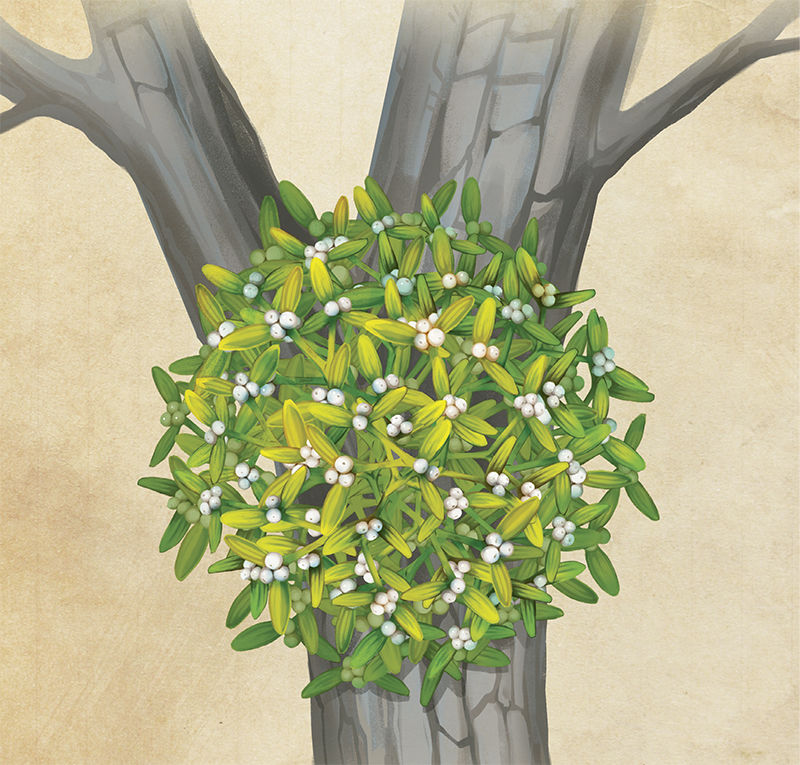Tracing the origins of a holiday decorating tradition

Many Charleston doorways will be decorated with American mistletoe this Christmas, and for some, standing under the greenery will lead to a kiss. The custom of hanging mistletoe has roots in ancient times, when people thought this seemingly rootless, tree-top growing evergreen possessed mystical powers. The plant, which grows abundantly in the Lowcountry, might not be magical, but it works wonders for habitat biodiversity and provides food for many creatures, especially birds.
GREEN THIEF - The botanical name Phoradendron leucarpum is Greek for ”thief of a tree with white fruit.” Mistletoe is a hemi-parasite and “steals” nutrients from its host. Yet this doesn’t always cause damage. Its roots only extend deep enough into the tree to extract a certain amount of water and minerals. Its thick green leaves also photosynthesize, gathering additional energy from the sun.
STRANGE NAME - “Mistletoe” is a blending of two Anglo-Saxon words: “mistle” for dung (in this case, bird droppings) and “toe” for twig. After eating the plant’s berries, birds either regurgitate or excrete the seeds in droppings. The seeds are coated with a gooey substance called viscin, which sticks firmly to a tree branch and hardens, providing a solid base for a new plant to germinate and grow.
SMOOCHIN’ SPOT - Kissing under this evergreen can be traced back centuries to early cultures that considered the plant a symbol of fertility. Mistletoe—the sacred symbol of Frigga, the Viking goddess of love—was used to promote long, fruitful marriages. By the 18th century, these beliefs had evolved into a tradition: A man could kiss any woman standing beneath the plant he desired; if she refused, bad luck would befall her.
MAKE AN ENTRANCE - The tradition of hanging mistletoe over the doorway dates back to the Classical Period and earlier, when people thought the evergreen had mystical powers. The Druids displayed the branches to celebrate the New Year. In Ancient Rome, bunches were placed over doorways as a symbol of peace and to protect households from danger. Mistletoe also was hung during Saturnalia, the Roman festival held in December from which many Christmas traditions have evolved.
CONTROVERSIAL CURATIVE - Mistletoe teas and extracts have been used in folk medicine as a treatment for everything from migraines and rheumatism to high blood pressure (American mistletoe is believed to cause blood pressure to rise; European mistletoe causes it to drop). While the National Cancer Institute has supported clinical trials of the plant’s extracts, its medical use remains controversial due to its toxicity. Birds can feed on berries with no adverse effects, but use caution when decorating around children and pets.
AIM HIGH - Because this parasitic plant grows in the tops of trees, harvesting a bunch isn’t easy. The old-fashioned way requires shooting sprigs down with a shotgun (perhaps safer than climbing a tree). But the easiest and safest way to acquire fresh mistletoe is by purchasing some at a store.